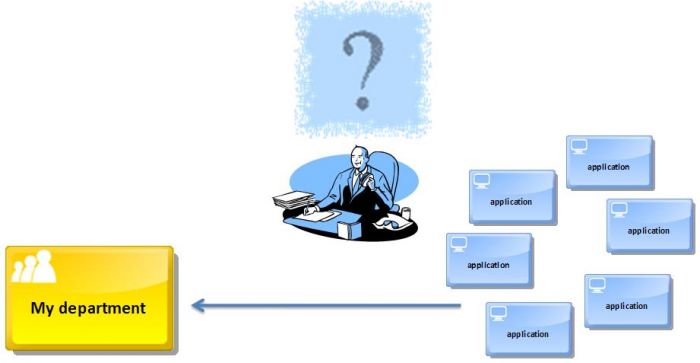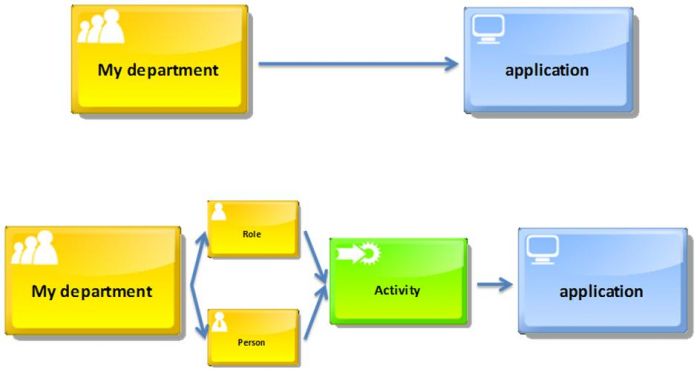In the preparation for an improved analysis functionality within ARIS, we discussed several approaches to find a way through the data in a database on the ARIS server. In general there are two different possibilities. I will try to explain this by giving an example:
The manager of a department needs to find out, which applications are used within his department (to plan the number of licenses he needs to apply for the next year).
As an experienced ARIS user, he could choose the following approach. It’s a stepwise navigation. Starting on an object which represents his department, he could look for the roles and for the persons which belong to his unit. In a next step, he could look for the applications they are related to directly. In addition, he could check whether the roles and persons are related to functions in processes. If these functions are supported by an application, he can assume that also these applications are relevant.
The result in the end is a couple of possibilities, how his department (or better the people within) is using applications. (see the two of the examples in the graphic below)
If the manager knows his database quite good, he will be able to define a kind of a query he can use for his analysis with this stepwise approach. But he needs a good knowledge or else it might happen that he forgets important “paths” in his database and in the end his people will complain because of missing licenses.
The other idea we follow in our discussions is a support for a less advanced user. In this case our manager knows not very much about the ARIS data. He has got a question and it could be seen similar to a navigation system in the car: He knows the start point (my department) and the end point of his route (applications). Now it would be good to get all possible “routes” from the department to the applications automatically.
What are disadvantages?
“There is more than one way to skin a cat”. And maybe there is overkill?
In the next article, I will show you some results of the second approach; let’s call it at the moment our “pathfinder” approach. I’m interested in your feedback. What are your experiences with searching within your databases?




